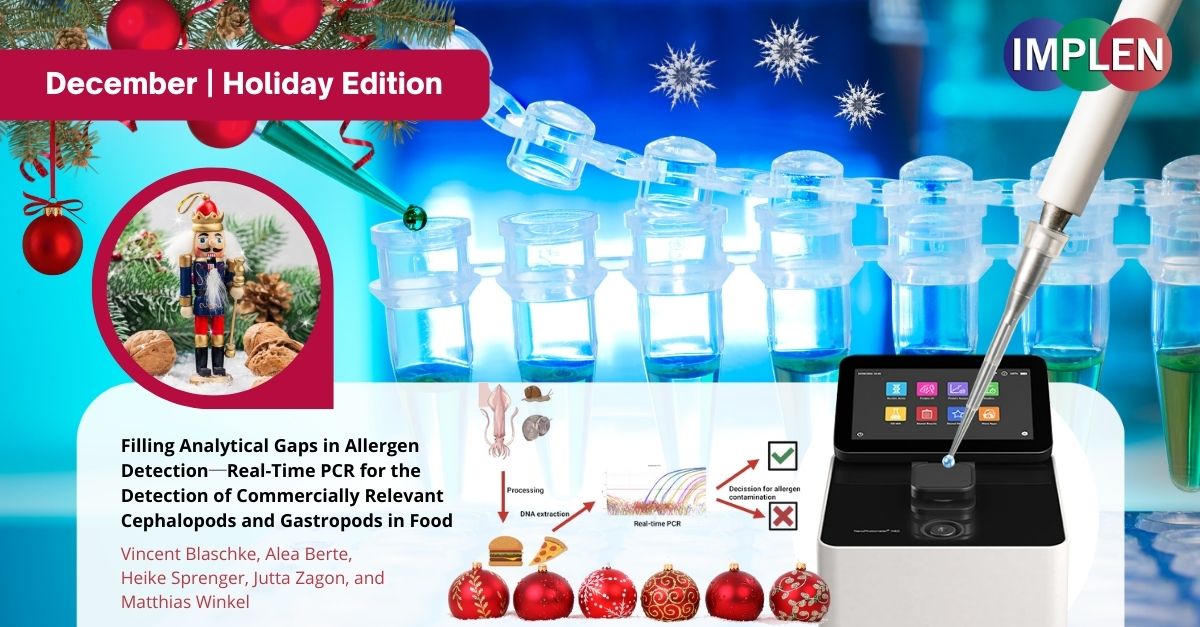Implen Journal Club | December Issue Holiday Edition |
|
SKI TRIP for tissue-specific profiling of actively translated mRNAs in C. elegansThe first issue is looking forward to a holiday ski trip with the introduction of a groundbreaking tool developed by Wester et. al., known as the Single-Copy Knock-In TRAP (SKI TRIP) toolkit, offering a seamless way to explore processes like aging, which are highly responsive to alterations in protein production. SKI TRIP facilitates tissue-specific profiling of actively translated mRNAs in C. elegans tissues, including muscle, neurons, and the gut, without interfering with translation or the organism's fitness. This toolkit has been meticulously optimized and fully characterized, making it a reliable resource for unraveling tissue-specific translation regulation, providing insights into translation processes across distinct cell types. Leveraging the capabilities of SKI TRIP, the pre-existing SKI LODGE CRISPR cassette system was employed to create C. elegans strains that express FLAG-tagged RPL-22 in a tissue-specific manner, driven by tissue-specific promoters in somatic tissues, muscle, neurons, or the intestine. This robust SKI TRIP toolkit empowers researchers to delve into the intricate realm of tissue-specific translational control in C. elegans, allowing for investigations across a spectrum of genetic, environmental, and metabolic conditions. Remarkably, this system leaves overall translation unaffected, making it uniquely suited for uncovering tissue-specific regulation of protein production during processes that are exceptionally sensitive to translation perturbations, such as development, aging, and metabolic homeostasis. SKI TRIP may be useful for the exploration of tissue-specific distinctions in translation and for the investigation of processes that exhibit acute sensitivity to changes in translation, such as development or aging. The NanoPhotometer® NP80 was used in this study to analyze RNA. |
|
NanoPhotometer’s role in Enhancing Food Safety with UV-C Technology: A Case Study in Soy Milk SterilizationThe NanoPhotometer’s role in Enhancing Food Safety with UV-C Technology is the topic of the next Implen NanoPhotometer® Journal Club issue: Holiday Edition to celebrate the 12 days of Christmas. In the realm of food safety and processing, the quest for innovative and effective sterilization methods is perpetual. A recent groundbreaking study by Martínez-García et al., published in the journal of Foods, sheds light on the efficacy of ultraviolet-C (UV-C) radiation in inactivating a range of harmful microorganisms in soy milk, a widely consumed beverage as a popular alternative to the “Maids a Milking” on the 8th day of Christmas. This research demonstrates the promising potential of UV-C treatments in achieving substantial microbial reductions in fluid foods like soy milk. While complete commercial sterilization remains a challenge, this study indicates that significant microbial reduction is feasible. Overall, this marks a significant step forward in the quest for safer food processing techniques, making UV-C radiation a compelling candidate for broader application in the food industry. This research is particularly relevant as novel approaches were explored to ensure food safety during the holiday season and beyond. The Implen NanoPhotometer® was utilized in this study to measure the coefficient of absorbance at 254 nm. The UV-C energy emitted by the lamp per volume unit at 254 nm was measured using the chemical iodide/iodate actinometer developed and using a potassium iodide solution passed through the UV-C reactor. Its absorbance was then measured at 352 nm using the NanoPhotometer® spectrophotometer. |
|
Revolutionizing Allergen Detection: Bridging Science and Tradition with The Nutcracker and NanotechnologyNext, we explore the parallels between the groundbreaking allergen detection study by Blaschke et. al. and the beloved "The Nutcracker" ballet. Just as "The Nutcracker" weaves together intricate dance, music, and storytelling to create a comprehensive and enchanting experience, this study integrates precise science, robust testing, and practical applicability to revolutionize allergen detection in the food industry. In "The Nutcracker," various elements – from the delicate movements of the ballerinas to the iconic Tchaikovsky score – come together harmoniously, each playing a crucial role in the ballet's overall impact. Similarly, the study's multi-faceted approach, from its meticulous cross-species testing for specificity to its rigorous validation under diverse cooking conditions, echoes the harmony and precision of a ballet performance. Just as each scene in "The Nutcracker" is essential to the narrative, every aspect of the research – specificity, sensitivity, and practical robustness – is critical to its goal of enhancing food safety. The elegance and complexity of the ballet find a scientific counterpart in this important research, both pushing boundaries and offering new insights in performing arts and food safety respectively. The Implen NanoPhotometer® N60 was used in this study for the quantification and assessment of the quality of extracted DNA. In molecular biology, accurate DNA quantification is crucial for preparing samples for techniques like real-time PCR, as used in this study. The NanoPhotometer® provides this precise measurement and quality assessment, ensuring that the DNA samples are suitable for subsequent analysis. |
©2023 Implen. All rights reserved.


